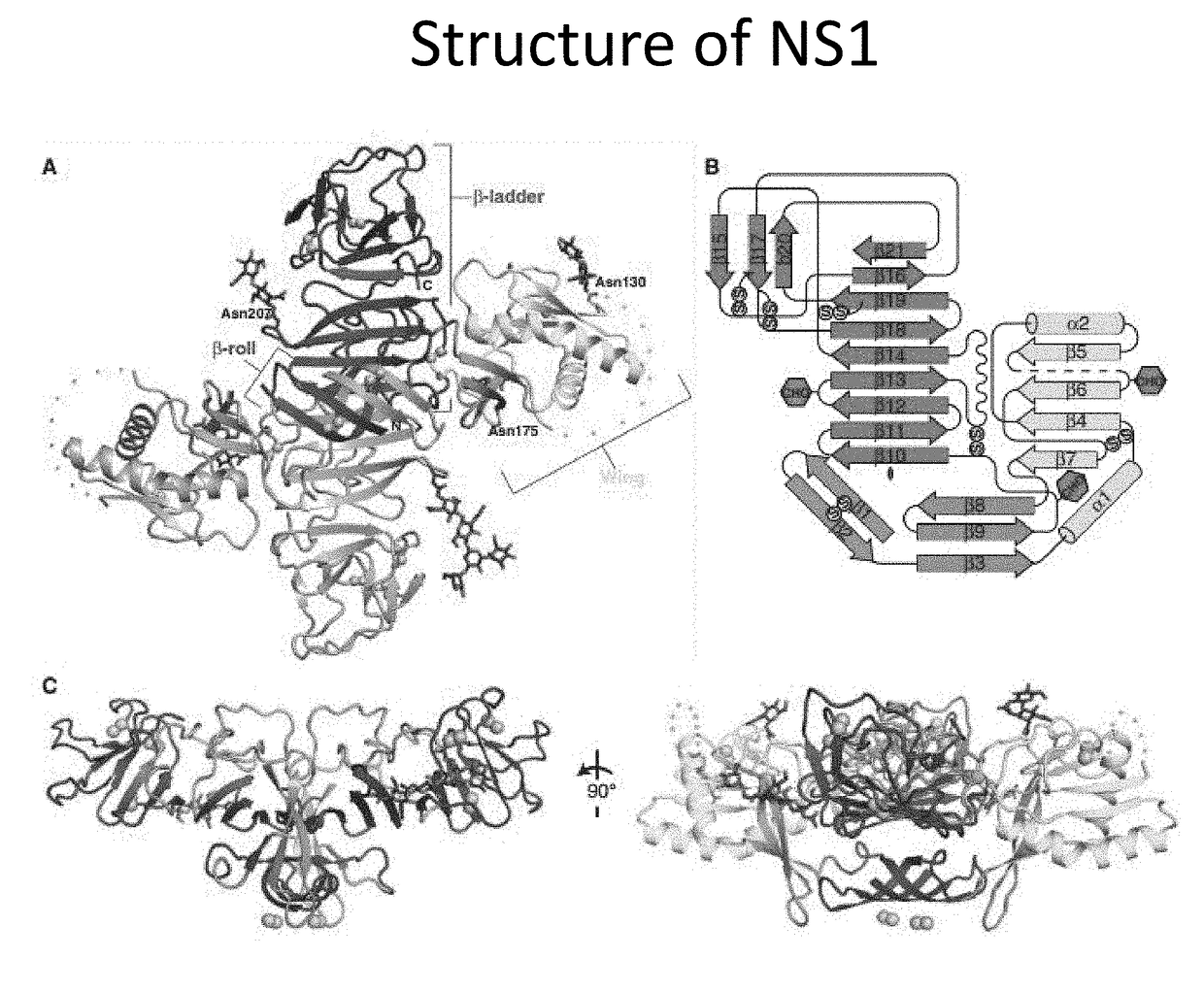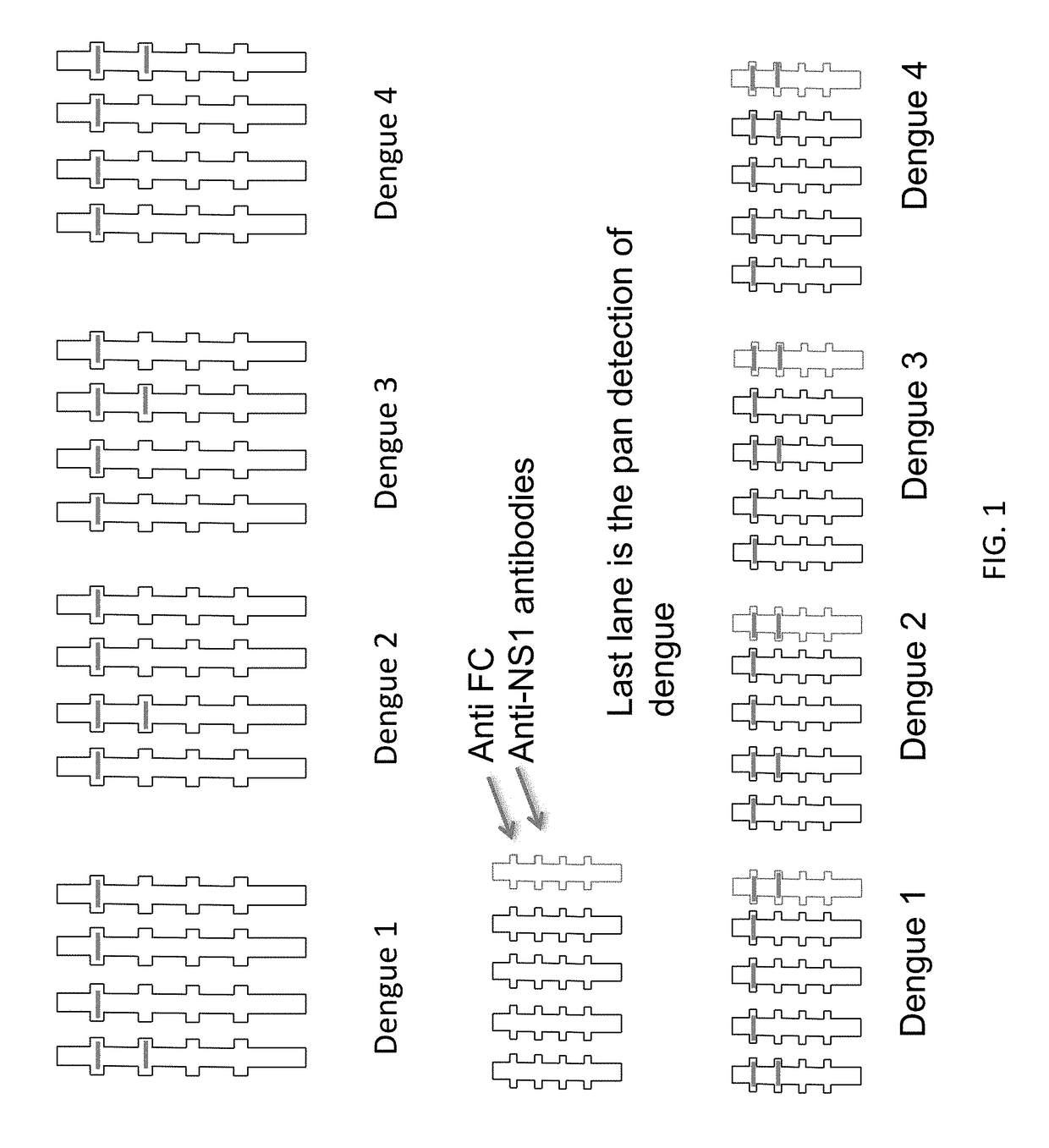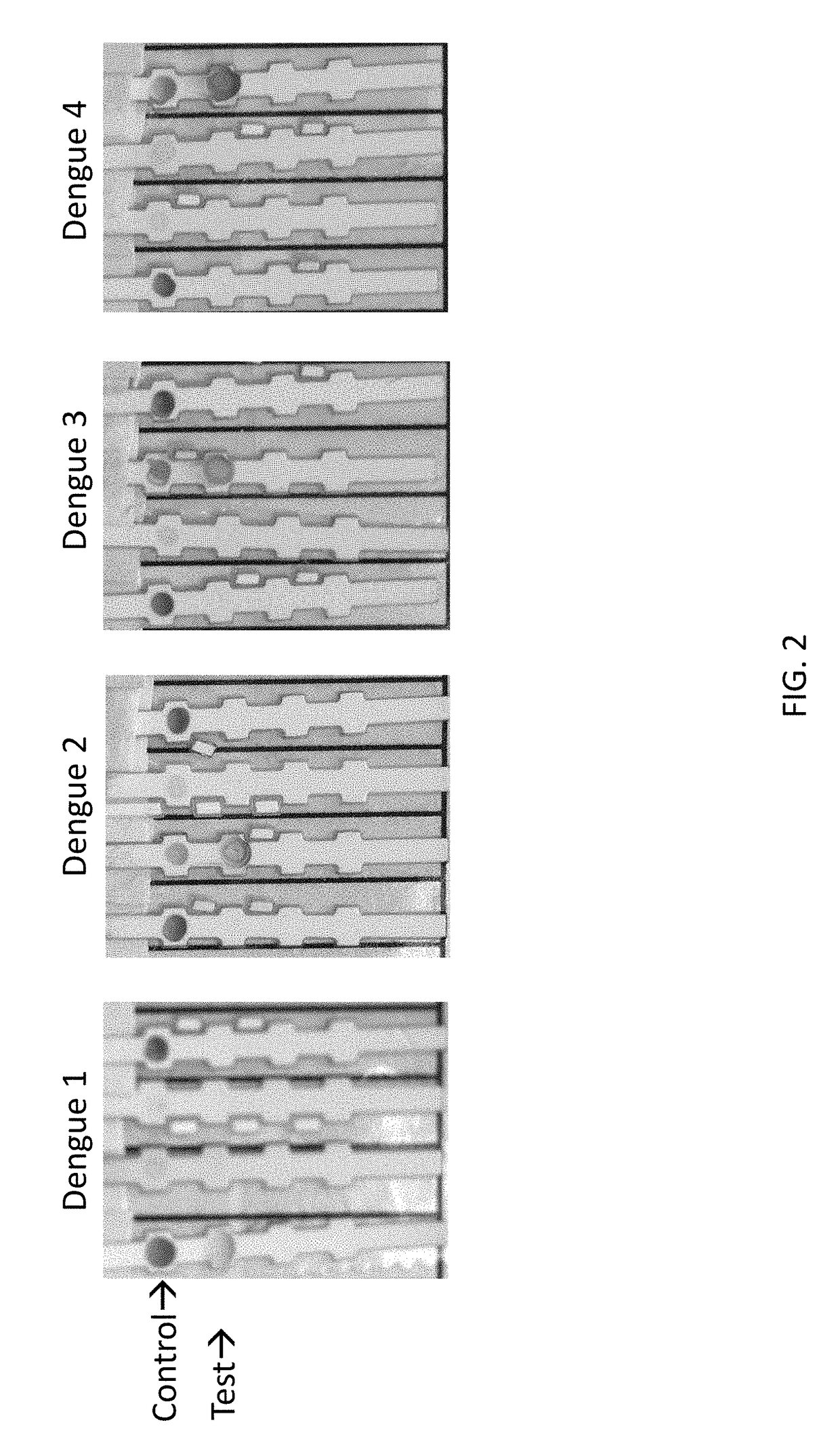Anti-Dengue Virus NS1 Protein Monoclonal Antibodies
a technology of ns1 protein and antibody, which is applied in the field of anti-dengue virus ns1 protein monoclonal antibodies, can solve the problems of hampered implementation of a single assay that is highly sensitive for all serotypes, no cross-protective immunity in humans, and 2.5 billion people at risk of infection in subtropical and tropical regions of the world. to achieve the effect of facilitating the development of confirmatory tests
- Summary
- Abstract
- Description
- Claims
- Application Information
AI Technical Summary
Benefits of technology
Problems solved by technology
Method used
Image
Examples
example 1
on of Recombinant NS1 Glycoprotein
[0137]Full-length NS1 protein from each of the dengue serotypes were obtained from a commercial source (Native Antigen Company, Oxfordshire, UK), using a mammalian expression system. Briefly, secreted NS1 was concentrated, purified using glass chromatography, and examined by SDS-PAGE under reducing conditions, with and without heat treatment. No heat treatment ensures that NS1 dimers can be observed by SDS-PAGE. The results demonstrated the presence of glycosylated monomers, glycosylated dimers and a small fraction of non-glycosylated monomers and non-glycosylated dimers.
example 2
on of Antibodies to NS1 Glycoprotein
[0138]Polyclonal mouse sera and monoclonal antibodies against the dengue NS1 glycoprotein isolated as described and in combination with a screening method were prepared generally as follows.
[0139]30 μg of purified NS1 in 50 μl of PBS was emulsified with equal volume of Complete Freund's Adjuvant and injected subcutaneously into a 5 week old female Balb / c mouse. Seven days later, the same amount of NS1 emulsified with Incomplete Freund's Adjuvant was injected intraperitoneally into the same mouse. The injection was repeated once more 21 days after the initial injection. On days 42, 43 and 46, the mouse received intraperitoneal injections of 30 μg of NS1 in 50 μl of PBS without adjuvant. Two days later the animal was sacrificed, and the spleen excised under sterile conditions.
[0140]The spleen was homogenized with scissors under serum free RPMI 1640 medium, and passed through a nylon cell strainer to form a splenocyte suspension. Splenocytes were col...
example 3
g of Antibodies Produced by Hybridomas
[0144]Total RNA was extracted from frozen hybridoma cells provided by the client and cDNA was synthesized from the RNA. PCR was then performed to amplify the variable regions (heavy and light chains) of the antibody, which were then cloned into a standard cloning vector separately and sequenced.
Materials
[0145]Hybridoma cells from hybridomas 724-55, 724-271, 724-323, 724-411, and 724-626.[0146]TRIzol® Reagent (Ambion, Cat. No.: 15596-026);[0147]PrimeScript™ 1st Strand cDNA Synthesis Kit (Takara, Cat. No.: 6110A).
Methods
[0148]Total RNA was isolated from the hybridoma cells following the technical manual of TRIzol® Reagent. The total RNA was analyzed by agarose gel electrophoresis. Total RNA was reverse transcribed into cDNA using isotype-specific anti-sense primers or universal primers following the technical manual of PrimeScript™ 1st Strand cDNA Synthesis Kit. The antibody fragments of VH and VL were amplified according to the standard procedure...
PUM
| Property | Measurement | Unit |
|---|---|---|
| time | aaaaa | aaaaa |
| time | aaaaa | aaaaa |
| time | aaaaa | aaaaa |
Abstract
Description
Claims
Application Information
 Login to View More
Login to View More - R&D
- Intellectual Property
- Life Sciences
- Materials
- Tech Scout
- Unparalleled Data Quality
- Higher Quality Content
- 60% Fewer Hallucinations
Browse by: Latest US Patents, China's latest patents, Technical Efficacy Thesaurus, Application Domain, Technology Topic, Popular Technical Reports.
© 2025 PatSnap. All rights reserved.Legal|Privacy policy|Modern Slavery Act Transparency Statement|Sitemap|About US| Contact US: help@patsnap.com



